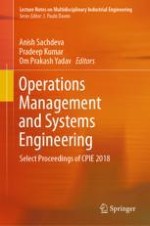This book comprises select proceedings of the International Conference on Production and Industrial Engineering (CPIE) 2018. The book focuses on the latest developments in the domain of operations management and systems engineering, and presents analytical models, case studies, and simulation approaches relevant to a wide variety of systems engineering problems. Topics such as decision sciences, human factors and ergonomics, transport and supply chain management, manufacturing design, operations research, waste management, modeling and simulation, reliability and maintenance, and sustainability in operations and manufacturing are discussed in this book. The contents of this book will be useful to academics, researchers and practitioners working in the field of systems engineering and operations management.
